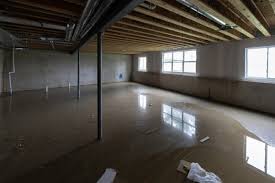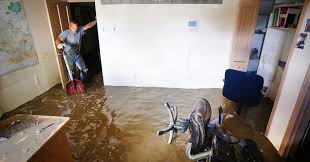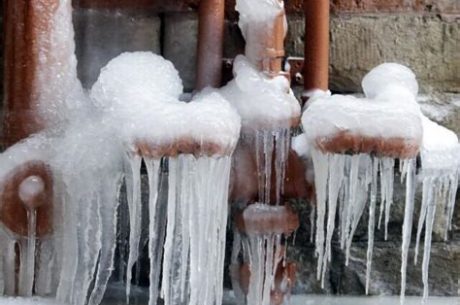Basement flooding is one of the most frustrating problems a homeowner can face. Not only can it cause significant property damage, but it can also lead to mold growth, structural damage, and long-term health hazards. Unfortunately, basements are especially susceptible to flooding due to their location below ground level, where they are more prone to leaks and water infiltration.
Table of Contents
As experts in water damage restoration, PuroClean of Layton specializes in mitigating the impact of flooding and preventing future issues. However, prevention is always the best defense. This post will provide essential basement flooding prevention tips, backed by industry best practices and recommendations from trusted sources in water damage management. When basement flooding happens, PuroClean of Layton is an expert to call. Call (801) 989-5554 or click here.
1. Ensure Proper Gutter and Downspout Maintenance
A common cause of basement flooding is improper drainage of water from the roof. Gutters and downspouts play a critical role in directing rainwater away from your home’s foundation. If they become clogged or improperly positioned, water can accumulate around the foundation and seep into the basement.
Key Maintenance Tips:
- Clean gutters regularly: According to the National Association of Home Builders (NAHB), gutters should be cleaned at least twice a year, ideally in spring and fall, to prevent debris build-up that causes water overflow .
- Install gutter guards: Gutter guards are an excellent investment to reduce debris and minimize cleaning frequency. They allow water to pass through while keeping leaves and other materials out.
- Direct downspouts away from the house: Make sure your downspouts extend at least six feet away from your foundation. The American Society of Home Inspectors (ASHI) advises this to prevent water from pooling around the base of your home .
By keeping your gutters and downspouts in good working condition, you can significantly reduce the risk of water reaching your basement.
2. Seal Cracks in Basement Walls and Floors
Cracks in your foundation and basement walls can provide entry points for water. These cracks can be caused by natural settling of the house or hydrostatic pressure from groundwater.
How to Seal Cracks:
- Inspect the foundation regularly: Homeowners should inspect their basement walls and floors at least once a year to check for cracks or signs of water leakage.
- Apply waterproof sealant: Products like epoxy or polyurethane sealants can be used to fill cracks and prevent water infiltration. The International Association of Certified Home Inspectors (InterNACHI) recommends using a high-quality waterproofing compound to protect vulnerable areas .
- Hire professionals for major repairs: If you discover large or expanding cracks, it may indicate structural issues. In this case, it’s best to call in a foundation repair expert.
Proactive crack sealing is one of the most effective ways to prevent water from seeping into your basement during storms or periods of heavy rain.
3. Install a Sump Pump
A sump pump is essential equipment for preventing basement flooding, particularly in areas prone to water accumulation. This device works by automatically pumping out excess water that collects in the sump basin and discharging it away from your home.
Choosing the Right Sump Pump:
- Primary sump pump: The U.S. Federal Emergency Management Agency (FEMA) emphasizes the importance of having a primary sump pump, especially in flood-prone areas . This pump will activate automatically when water levels rise in the sump pit.
- Battery backup system: To ensure continuous operation during a power outage (common during storms), consider installing a sump pump with a battery backup.
- Routine testing: Test your sump pump regularly by pouring water into the sump pit to ensure that it activates and properly discharges water away from your home.
If you live in an area with a high water table or frequent storms, a sump pump is a critical defense against basement flooding.
4. Improve Yard Grading
Proper yard grading is essential for directing rainwater away from your home’s foundation. If your yard slopes toward your house, water will naturally pool around the foundation, increasing the risk of basement flooding.
Yard Grading Best Practices:
- Create a slope: The University of Minnesota Extension recommends ensuring that the ground slopes away from your home by at least 6 inches over a 10-foot distance . This will allow rainwater to flow away from the foundation rather than pooling around it.
- Fill low spots: If your yard has low areas where water tends to collect, fill them with soil and grade them to slope away from your home.
- Install drainage solutions: In some cases, adding a French drain or catch basin may be necessary to improve drainage in areas where water consistently pools.
By improving the grading around your home, you can prevent rainwater from accumulating near your foundation, minimizing the risk of basement flooding.
5. Install a French Drain System
French drains are one of the most effective ways to manage water around your home’s foundation. These systems are designed to collect water and direct it away from your basement, helping to reduce hydrostatic pressure that can lead to flooding.
How French Drains Work:
- Perforated pipe installation: A French drain consists of a perforated pipe installed in a trench filled with gravel. The pipe collects water and channels it away from the foundation, preventing it from building up and causing flooding.
- Exterior vs. interior drains: According to HomeAdvisor, exterior French drains are installed around the perimeter of the foundation, while interior drains are installed inside the basement . Both types are highly effective in preventing water from entering the basement.
French drains can be an invaluable tool for homeowners dealing with persistent water problems or high groundwater levels.

6. Maintain Your Home’s Plumbing System
Plumbing leaks or burst pipes can cause basement flooding, especially if they occur in or near the basement. Maintaining your plumbing system is essential to prevent these types of water-related disasters.
Plumbing Maintenance Tips:
- Inspect pipes regularly: The American Water Works Association (AWWA) advises homeowners to inspect plumbing fixtures and exposed pipes for signs of leaks or corrosion . Look for damp spots, water stains, or puddles in your basement.
- Install a backflow preventer: In areas prone to heavy rain, a backflow preventer can stop sewage from backing up into your home, which can lead to serious flooding and health hazards. The Environmental Protection Agency (EPA) recommends backflow preventers in flood-prone areas .
- Upgrade old pipes: If you have older pipes made of galvanized steel or other outdated materials, consider upgrading to more durable, modern piping to reduce the risk of leaks.
Regular plumbing maintenance and timely repairs are essential for avoiding basement flooding due to water leaks.
7. Install Window Well Covers
Basement windows are another potential entry point for water, particularly during heavy rainfall or snowmelt. Window wells that fill with water can easily lead to basement flooding.
Protecting Basement Windows:
- Install window well covers: The Insurance Institute for Business & Home Safety (IBHS) recommends installing clear, sturdy window well covers to keep rainwater, debris, and snow out of the wells .
- Maintain drainage in window wells: Make sure your window wells have proper drainage. If water starts accumulating in the wells, ensure that the drainage system is functioning correctly.
- Inspect for leaks: Check the seals around your basement windows and reapply caulk or waterproofing as needed to prevent water infiltration.
Securing your basement windows with covers and ensuring proper drainage will help keep water out of your basement during heavy storms.
8. Install a Backup Generator
Power outages often accompany severe storms, rendering your sump pump and other drainage systems inoperative just when you need them most. A backup generator ensures that essential equipment like your sump pump can continue working, even during power outages.
Generator Considerations:
- Size matters: The U.S. Department of Energy (DOE) recommends selecting a generator that is properly sized for your home’s energy needs . For sump pumps and other key systems, a small standby generator should suffice.
- Automatic transfer switch: Some backup generators come with an automatic transfer switch that will automatically start the generator in the event of a power outage.
- Fuel options: Generators are available in various fuel types, such as natural gas, propane, or gasoline. Choose a fuel type that is readily available and meets your home’s needs.
Having a backup generator gives you peace of mind, knowing that your flood prevention systems will continue to function during storms.
9. Check Your Sewer and Septic Systems
Sewer backups and septic system failures can also lead to basement flooding, especially during heavy rain or if the system becomes clogged.
Preventing Sewer Backups:
- Install a backwater valve: A backwater valve prevents sewage from flowing back into your home during heavy rains. According to FEMA, this is a critical flood prevention tool .
- Maintain septic systems: The EPA recommends having your septic system inspected and pumped every three to five years to avoid overflows .
- Avoid flushing inappropriate materials: Items like wet wipes, grease, and paper towels should not be flushed down the toilet or poured down drains. These materials can clog pipes and contribute to backups.
Maintaining your sewer and septic systems is key to preventing unwanted water from entering your home and causing flooding.
10. Regularly Inspect and Test Your Flood Prevention Systems
Once you’ve implemented flood prevention measures, it’s important to regularly inspect and maintain your systems to ensure they remain functional.
Routine Checks:
- Inspect sump pumps annually: Test your sump pump annually to ensure it activates correctly and discharges water effectively. If possible, have a professional service your sump pump once a year.
- Check for signs of water damage: Look for dampness, water stains, or mold in your basement, which could indicate water is entering despite your preventative measures.
- Maintain all drains and downspouts: Clean and inspect drains, gutters, and downspouts regularly to ensure they are clear of debris and functioning as intended.
By maintaining and testing your flood prevention systems, you can catch potential issues early and make necessary repairs before they lead to basement flooding.
Basement flooding can be a costly and stressful problem for homeowners, but with the right prevention measures, you can significantly reduce the risk of water damage. From maintaining gutters and downspouts to installing a sump pump and backwater valve, these tips will help protect your basement from flooding.
At PuroClean of Layton, we specialize in water damage restoration and can help homeowners recover from basement flooding. But remember, prevention is always better than cure—implement these tips today to keep your basement dry and your home safe. For more on how PuroClean of Layton can help property owners during any form of property damage, read our blog post on the 7 Great Reasons PuroClean of Layton is the Premier Choice for Property Restoration Services in Salt Lake City




 PuroClean of Layton
PuroClean of Layton